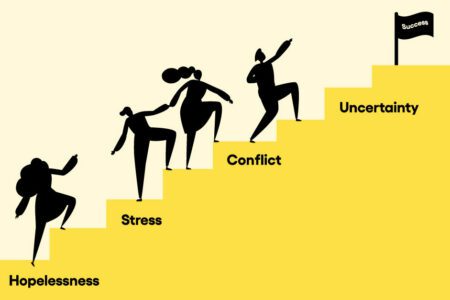How to navigate your executive search in the new 9 to 5 era
For most employees, the last two years have been transformative. Home offices were set up in one night, suits were swapped for sweatshirts, and meetings in the conference room are now Zoom calls.
Remote work has changed lives, some for the better, and some for the worse. Many now have more flexibility in their schedules to spend time with their families, while others have discovered the freedom of traveling and working from anywhere in the world with just a Wi-Fi connection. On the other end of the spectrum, many miss the simple things that got them into a routine, like the morning commute, the coffee breaks with colleagues, and the outgoing office environment.
To put it simply, everything has changed. Given these circumstances, do you know how to recruit the right executives to lead your team to success?
René Tardif is the National Practice Leader with Gallagher and is responsible for leading the Executive Search practice in Canada. With over 17 years of experience in the recruitment industry, he is actively involved in every aspect of the search process, including business development, research, interviewing, and candidate assessments. He sat down with Amanda Fleising, host of the talent management and coaching podcast People Potential with Amanda, to discuss what HR professionals should be looking for when it comes to recruiting C-level employees.
The major difference in hiring first-level managers and executives
Hiring leaders of any kind is a key component in achieving organizational success. But it’s vital to understand that there ultimately will be more time and work put into finding the right individual to fill an executive role, partly because there is simply more at stake in the long run.
“If we pause and look at the process itself, there’d be more depth around actually conducting an executive search. First-level, mid-management search, you’re at 6 to 8 weeks from start to finish on those types of searches. In an executive search mandate, you’re at about 12 [weeks], so you’re at least [doubling] if not more, in terms of the time you’re spending in-market actively searching for those candidates,” explains René.
Assessing candidates for an executive role and figuring out how they would fit into and benefit the organization in question requires more precision and might not necessarily be the right project for any major risk-taking. For first-level managers, the goal is more about who you can find to reasonably fill the role. “We call that speed-to-market,” René says. “You can move through the process rapidly [to find the candidate] that you understand fits into the role that you’re looking for.”
The essential behavioral traits C-suites need to have today
The classic 9 to 5 is no longer what it used to be, and organizations have had to adapt to this new normal with new approaches and strategies. To do this effectively, it requires C-suites to be flexible in this latest work environment for the organization itself to succeed. Nowadays, leaders in possession of certain soft skills make a significant positive impact on their team.
“We’re tending to see a lot of organizations that require leaders to be more empathetic and understand how to deal with ambiguity,” says René. For some who have been working from home for well over two years now, it can be a challenging adjustment period. A well-established mental health initiative is something that can support employees who may not necessarily be thriving in work-from-home mandated areas. Whether the issue is a lack of motivation to complete work or simply missing the routine-based days at the office, executives can exercise their empathy and greatly support their employees by helping them navigate their way to a healthy and productive work-life balance.
A leader’s ability to relate to their employees can help their team members know that they are valued and supported. As a leader, especially at a C-level, if you can show a level of vulnerability to your team, like admitting that you aren’t having the greatest day either, allows for a more human connection to flow within those Zoom meetings.
How a behavioral assessment can help you make the right choice the first time
Being a leader does not come naturally to everyone, and even when it does, challenges are inevitable. That’s why hiring a candidate who can navigate them is crucial.
René and his team have been using SuccessFinder to help organizations hire the right C-suites for quite some time now. The team relies on the Ladder of Leadership to give a detailed breakdown of whether an individual naturally prioritizes more executive-like behaviors.
“It plays a big role in our search processes, and not just in sort of, you know, being another step in the process itself,” he says. “it’s actually a very valuable tool because by the time we get to the point in our process [where] we’re having candidates go through the assessment, it should sort of corroborate what we already know about a candidate.”
Whether it’s certain strengths or areas of development that stick out the most to the hirer, the goal of the platform is to be able to help HR professionals come up with questions carved from the candidate’s competencies and experience and not questions that simply call for cookie-cutter responses. By getting to know the potential candidate a little better with the results of the assessment beforehand, it can allow HR pros to come up with unique questions related to the candidate’s results rather than sticking to a timeless script of generic ones. This will be more helpful and more beneficial in the long-term in figuring out if the individual is a good fit for the organization.
Our research has found that there are two competencies that are fundamental at all levels of leadership: Thriving in chaos and Leading decisively. This means that candidates should demonstrate a strong and forceful leadership style and a readiness to directly influence others, as well as show they are highly efficient under seemingly chaotic demands and overlapping priorities. Along with the two fundamentals, executives also tend to score high in competencies like Initiating action independently and Maximizing profitability. You can find out more in the Ladder of Leadership whitepaper.
Why a healthy work culture starts with C-suites
Changes in work culture can always happen. With massive impacts (like a pandemic) come substantial shakes to the system. Executives need to be able to handle these changes by making sure employees have the tools and resources to adapt to them and continue their performance.
“I think the right leader that comes in will be the right ambassador to help propel the desired culture throughout the organization, sort of like permeating that culture,” reflects René.
Being able to instill different emotions into an entire team all comes down to a special trait that was briefly mentioned earlier: being vulnerable. There are two ways this can work.
First, to influence the creation of a culture that is not always about the work itself and acknowledges employees as unique individuals with full lives outside the (home) office in order to generate a sense of trust and purpose.
On the other hand, a leader that can cheerfully activate the ‘all systems go’ mode and encourage their team to do their best in every way they can is also needed. Both ends of the spectrum need that dose of openness and realness from the executive to work effectively. In the simplest terms, no one enjoys working for someone they can’t make any real connection with.
In today’s highly competitive market, hiring right the first time to fill an executive position can be more stressful than ever before.
Be sure to reach out to René Tardif and his Canadian team of experts to support your executive search efforts.
Click here to book a solution tour to find out more about SuccessFinder’s self-serve predictive hiring tools.




